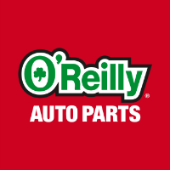-
Welcome to Auto Parts Forum
Whether you are a veteran automotive parts guru or just someone looking for some quick auto parts advice, register today and start a new topic in our forum. Registration is free and you can even sign up with social network platforms such as Facebook, X, and LinkedIn.
Continental Highlights Line Of ATE Replacement Brake Fluids
-
Similar Topics
-
By Counterman
Motorcar Parts of America (MPA) announced the company has expanded its product coverage programs for starters and alternators, brake calipers, brake pads and brake rotors, with more than 120 new part numbers covering an additional 30 million vehicles in operation.
The new part numbers are offered through QB, Quality-Built, Quality-Built Black Series and Pure Energy brands powered by MPA, which serve the professional installer market. A select list of late model part number introductions is available via the link below. A complete list is available by contacting a
link hidden, please login to view sales representative. “Our Quality-Built and Pure Energy products continue to gain traction in the professional market and the new part number introductions highlight our ongoing commitment to proactively develop, catalog, and distribute products to meet the demand,” said Jamie Cook, senior vice president of sales and marketing for Motorcar Parts of America.
link hidden, please login to view The post
link hidden, please login to view appeared first on link hidden, please login to view.
link hidden, please login to view -
By Clifford Auto Parts
Your car’s control module is one of the most important components in ensuring a smooth and efficient ride. Whether it’s an Engine Control Module (ECM), Powertrain Control Module (PCM), or Transmission Control Module (TCM), these electronic units play a crucial role in regulating engine performance, fuel efficiency, and transmission behavior.
At Clifford Auto Parts, we specialize in providing OEM control modules that guarantee compatibility, reliability, and long-term performance. But how do you know when it’s time to replace your control module? Let’s break it down!
✅ What Is a Control Module and What Does It Do?
A control module is an onboard computer that processes data from various sensors in your car and makes real-time adjustments to optimize performance. Some of the most common control modules include:
✔️ Engine Control Module (ECM) – Controls ignition timing, fuel injection, and emissions.
✔️ Powertrain Control Module (PCM) – Manages both engine and transmission functions.
✔️ Transmission Control Module (TCM) – Regulates gear shifting and transmission efficiency.
✔️ Body Control Module (BCM) – Handles electrical functions such as lighting, locks, and windows.
When these modules start to fail, your car may experience serious performance issues that could lead to costly repairs.
✅ Signs of a Failing Control Module
If your control module is going bad, your car will usually give you warning signs. Here are the top indicators that it may be time for a replacement:
🚨 Check Engine Light Stays On
If your Check Engine Light won’t turn off even after repairs, it could be due to a failing ECM or PCM.
🚨 Poor Fuel Efficiency
A malfunctioning control module may send incorrect signals, leading to excess fuel consumption and reduced mileage.
🚨 Difficulty Starting the Car
If your car struggles to start, the ECM might not be properly managing the fuel and ignition system.
🚨 Transmission Issues
A faulty PCM or TCM can cause hard shifting, gear slipping, or delayed acceleration.
🚨 Engine Stalling or Misfiring
A failing ECM can result in irregular combustion cycles, leading to stalling, misfires, and sluggish performance.
🚨 Electrical Malfunctions
The BCM controls many electronic functions, so if your power windows, locks, or headlights start acting up, it may be time for a replacement.
✅ What Causes Control Modules to Fail?
Several factors can lead to a control module failure, including:
🔥 Water or Moisture Damage – Exposure to moisture can corrode internal circuits.
⚡ Voltage Surges – A faulty alternator or battery can overload the control module.
🔧 Worn-Out Components – Over time, electronic components degrade, leading to failure.
💥 Physical Damage – Accidents or engine overheating can cause module failure.
If you’re experiencing any of these issues, replacing your control module can prevent further damage and restore your vehicle’s performance.
✅ Why Choose an OEM Control Module Over Aftermarket?
When replacing a control module, you have two options: OEM (Original Equipment Manufacturer) or Aftermarket. Here’s why OEM control modules are the best choice:
✔️ Guaranteed Compatibility – Designed specifically for your vehicle’s make and model.
✔️ Pre-Programmed for Plug-and-Play Use – No extra programming needed.
✔️ Factory-Tested for Reliability – OEM parts undergo rigorous quality checks.
✔️ Maintains Vehicle Warranty – Aftermarket parts may void manufacturer warranties.
✔️ Longer Lifespan – OEM modules are built to last, unlike some aftermarket options.
✅ Why Buy OEM Control Modules from Clifford Auto Parts?
At Clifford Auto Parts, we provide high-quality OEM control modules at unbeatable prices. Here’s why thousands of vehicle owners trust us:
✔️ OEM-Grade Control Modules for Ford, Dodge, Jeep, and More
✔️ Pre-Programmed & Ready to Install – No Dealership Required
✔️ Lifetime Warranty on ECM, PCM, and TCM Replacements
✔️ Fast & Free Nationwide Shipping – Receive Your Part in 3 Business Days
✔️ Expert Customer Support to Help You Find the Right Module
🚗 Looking for a replacement control module? Shop now at link hidden, please login to view and get back on the road with confidence!
✅ How to Install Your New Control Module
1️⃣ Disconnect the Battery – Prevents electrical damage.
2️⃣ Locate the Module – Found under the hood, near the firewall, or in the cabin.
3️⃣ Remove the Old Module – Carefully disconnect all wiring and mounting bolts.
4️⃣ Install the New OEM Module – Secure it and reconnect wiring.
5️⃣ Test Your Vehicle – Start your car and check for warning lights or error codes.
📌 Need help finding the right part? Call (516) 494-7838 for expert assistance!
✅ Final Thoughts: Get the Right Control Module for Your Car
A failing control module can cause engine trouble, transmission problems, and electrical failures—but replacing it with an OEM module ensures long-term reliability, compatibility, and optimal performance.
🔧 Don’t let a bad control module ruin your driving experience! Get a high-quality replacement today at link hidden, please login to view 🔧
📞 Have questions? Call (516) 494-7838 for expert support.
🚀 Fast Shipping – Lifetime Warranty – 100% Customer Satisfaction! 🚀
-
By abiztime
Various Types of Bearing Brake Disc(source from :rdbrake.com)
The primary function of bearing brake discs is to provide a stable and reliable surface for the brake pads to grip, thereby facilitating effective braking. When the brake pedal is pressed, the brake pads clamp onto the spinning brake disc, generating friction that slows down the wheel's rotation. The bearings within the brake disc assembly ensure smooth and consistent rotation, minimizing wear and tear on the braking system.
Types of Bearing Brake Discs
Ventilated Brake Discs: These discs feature internal vanes or vents that allow air to circulate, dissipating heat more efficiently. They are commonly used in high-performance vehicles and heavy-duty applications where heat management is crucial.
Solid Brake Discs: These are simple, flat discs without internal vents. They are typically used in smaller or lighter vehicles where excessive heat build-up is less of a concern.
Drilled and Slotted Discs: These discs have holes and grooves that enhance heat dissipation and improve braking performance, especially under extreme conditions. They also help in expelling dust and debris from the braking surface.
Composite Brake Discs: Made from a combination of materials such as cast iron and carbon composites, these discs offer superior performance, reduced weight, and enhanced heat resistance. They are often found in high-end sports cars and racing applications.
Maintenance of Bearing Brake Discs
Regular maintenance of bearing brake discs is essential to ensure the longevity and reliability of the braking system. Key maintenance practices include:
Inspection: Regularly inspect the brake discs for signs of wear, such as grooves, cracks, or uneven surfaces. This can prevent potential brake failure.
Cleaning: Keep the brake discs clean from dust, dirt, and debris. Use appropriate cleaning solutions and tools to avoid damaging the surface.
Lubrication: Ensure that the bearings are properly lubricated to reduce friction and prevent overheating. Use the recommended type and amount of lubricant for optimal performance.
Replacement: Replace the brake discs when they show significant signs of wear or when they reach the manufacturer's recommended lifespan. Timely replacement can prevent more severe damage to the braking system.
-
By abiztime
Various Packaging way of Brake Discs( from RDBRAKE.COM)
In the automotive parts industry, as the key safety components, the packaging design of brake discs is not only related to the product's market image, but also directly affects consumers' purchasing decisions.
1. Plastic bag
Generally, brake discs are first packed in a plastic bag. The plastic bag will be sealed as customers' requirement.
2. Neutral white box and kraft paper box: low cost.
3. Neutral colorful box for brake discs
4, Colorful pizza box for brake discs
5, Pallet
-
-





Recommended Posts
Join the conversation
You can post now and register later. If you have an account, sign in now to post with your account.
Note: Your post will require moderator approval before it will be visible.